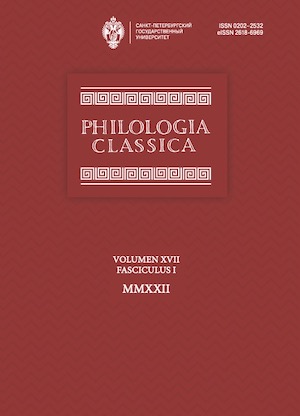Was Pigres an Interpreter to Cyrus?
DOI:
https://doi.org/10.21638/spbu20.2022.102Аннотация
Ancient authors did not leave us any description of ancient interpreters, and neither their usual functions nor possible social positions are known to us. Although this can be partially restored from written sources, the whole picture remains in the shadows. We are not aware of the ways in which people became interpreters in Antiquity, whether such a profession actually existed, and to what extent it is possible to apply the modern understanding of interpreters to ancient times. Finally, there are many dark corners in our understanding of historical specifics: the functions, social status and ethnic origin of interpreters obviously varied in different cultures and time frames. The use of a word or an expression defining the interpreter is another issue, for Greek ἑρμηνεύς, a traditional lexeme in dictionaries of Ancient Greek (LSJ, GE, DELG, GEW, EDG, Woodhouse), does not, in fact, always denote someone related to this line of work. In Xenophon’s Anabasis a person named Pigres is described as ἑρμηνεύς and one of the companions of Cyrus the Younger in his belligerent attempt to overthrow Artaxerxes II. Pigres is usually understood as an interpreter (Gehman, Lendle, Rochette, Wiotte-Franz, Stoneman etc.), but is there a solid basis for such understanding? What do we know about him? What does Xenophon tell us about his responsibilities? The study shows that Pigres’ identity should be understood in relation to the usage of the word ἑρμηνεύς in V–ΙV BCE and to the sociocultural context of Asia Minor under the rule of the Achaemenid dynasty.
Ключевые слова:
Pigres, ἑρμηνεύς, Cyrus the Younger, Xenophon, ancient interpreters
Скачивания
Библиографические ссылки
Hoffmann W. Pigres, in: RE 1950, XX/2, 1313–1316.
Загрузки
Опубликован
Как цитировать
Выпуск
Раздел
Лицензия
Статьи журнала «Philologia Classica» находятся в открытом доступе и распространяются в соответствии с условиями Лицензионного Договора с Санкт-Петербургским государственным университетом, который бесплатно предоставляет авторам неограниченное распространение и самостоятельное архивирование.






